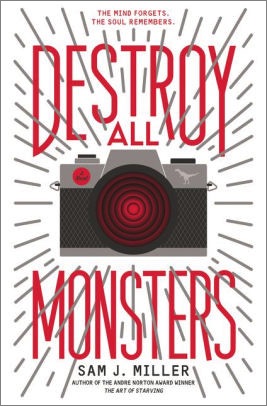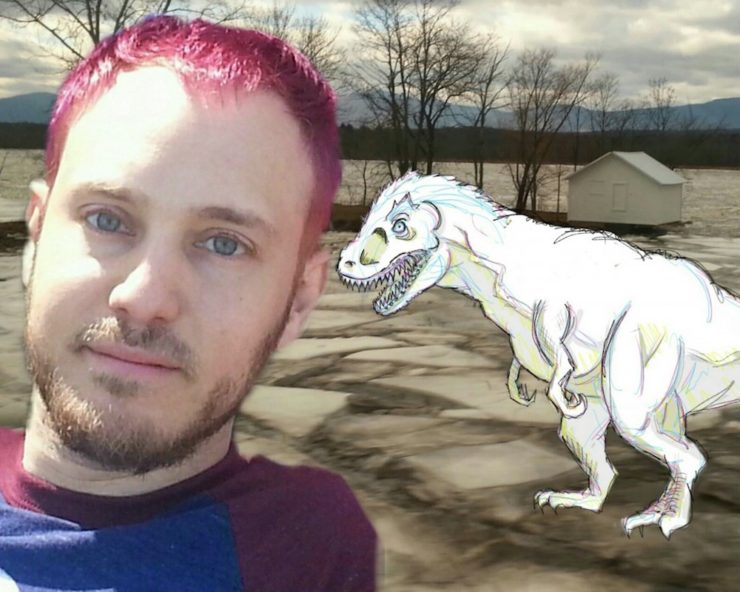When I was an actual adolescent, way back in the 1990s, YA was a very different place. Sure, the category existed—S.E. Hinton, Paul Zindel, Judy Blume—but it was nothing compared to the incredible proliferation of diverse storytelling that young adults enjoy today. And if any of those writers were writing about gay people, they certainly didn’t carry those books at the library in my small town. As a confused queer teen, I had no books about happy awesome gay people doing happy awesome things. When I did stumble upon queer representation, in the work of authors like Stephen King or Jack Kerouac, I was ecstatic… even if the representation itself was not so great.
Somehow, I survived. I made it out of my tiny home town and went to college, where I found James Baldwin, Jean Genet, Audre Lorde, Reinaldo Arenas, David Wojnarowicz, Virginia Woolf. In books and in real life, I found my people, my chosen family—and I ended up okay: a happy, proud, out gay man.
Well, as a person I was okay, but as an artist—maybe not so much. Maybe coming of age without ever seeing yourself in books or movies leaves wounds that run deeper than can be cured by a self-taught crash course in the queer classics. Because as a writer of science fiction and fantasy—and especially young adult—I couldn’t figure out how to tell those stories.
For a decade, I wrote novel after novel. Six total. Nobody wanted them. I tried to write Katniss Everdeen, or Taran Wanderer; I tried to write the straight romance arcs that popped up in all my favorite YA novels.
Not that SF/F hasn’t been queer as fuck for ages now. Samuel R. Delany, Thomas Disch, and my all-time favorite SF writer Octavia Butler—all of them included dynamic, amazing LGBTQ characters in their work, and all of them have been huge influences on me. But I felt sure that if I wanted to write for young adults, I’d have to closet myself—and my characters.
Cassandra Clare blew the lid off of that. Her books featured gay characters who weren’t just cannon fodder or comic relief. What’s more, they were hugely successful—New York Times bestsellers, selling millions of copies. So maybe writing queer stories in YA science fiction and fantasy wasn’t the kiss of death.
The central queer relationship in the six-book Mortal Instruments series, between immortal warlock Magnus Bane and shadowhunter Alec Lightwood, is not easy or idealized. These characters are messy and beautiful and and complicated, just like real gay people. They keep their relationship a secret, even though it causes them pain. They sacrifice for each other. Alec’s insecurities and lack of self worth cause him to betray his lover, which leads to the couple breaking up—an all-too-real queer relationship dynamic, hence Rupaul’s famous quote “if you can’t love yourself, how in the hell are you gonna love somebody else?” Admittedly, the insecurity in question here is that Alec feels like a puny trivial mortal plaything to the four-hundred-year-old warlock, and the betrayal is that he maybe sort of considers taking Magnus’s immortality away, NBD—but you get the idea. Then they get back together. They adopt a baby someone drops on their doorstep. Then a random orphan. They get married. If all of this sounds very soap-opera, it is. But as a gay reader who’s been forced to follow bland straight couples through very intricate relationship ups and down, it’s glorious to see a gay couple get to have some ridiculous convoluted plot antics of their own. To say nothing of the fact that on the television show Shadowhunters, which ran for three seasons, there was lots of adorable gay Malec kissing… and they got married in the series finale!
The bottom line is, Magnus and Alec’s happiness is earned. I could go on and on… but for a deeper dive into this glorious ship (and a whole lot of fanart, much of it NSFW) explore the hashtag #Malec.
The Mortal Instruments series wasn’t around to give me the validation I so desperately needed as an adolescent—but as an adult, as an artist, it gave me something just as valuable—permission. Permission to be queer as hell while writing YA. Permission to tell stories that went to dark places, whose heroes weren’t wholesome Harries or Katnisses (I love those stories… but I can’t write them).
Finally, I got it: the book I had to write was the one I had been trying my hardest not to write. The story I was too scared to tell. The one that was too gay and dark to ever get published—or so I thought. The one about my eating disorder, and how it was connected to coming of age as a lonely bullied gay boy, and how starving myself made me feel powerful when nothing else did.
And that was the book that sold. Unlike the six novels I wrote before it—the ones where I was trying my hardest not to bare my own queer heart—that book, The Art of Starving, found a home at HarperTeen. It found an audience. Lots of people seemed to like it. I even got an actual letter in the mail, from a high schooler in Florida who saw himself in both my protagonist, Matt, and Matt’s antagonist-turned-boyfriend, Tariq. At the Nebula Awards in 2018, it took home the Andre Norton Award for Best Young Adult Science Fiction or Fantasy Novel.
Buy the Book


Destroy All Monsters
And now, with my new YA novel Destroy All Monsters, I’ve tried to continue down that dark twisted queer road. It’s a story of magic and dinosaurs and boys in love. And cameras that can see your damage. And trauma. And how friendship can save us. And how sometimes it can’t.
It’s important to add that Cassandra Clare is by no means the only incredible author doing magnificent stuff with queer characters in the YA SF/F space. She may have been my first, but once I started looking I found tons of examples. Alex London’s Proxy is a brilliant, pioneering gay YA SF novel—and his new Skybound series is SLAYING the scene. While Adam Silvera isn’t typically marketed as science fiction/fantasy, his work explores future technology with the same skill and insight that equals anything happening on the genre shelf in the bookstore. Same for Shaun David Hutchinson, whose We Are The Ants rode the line between “is this great science fiction or is this character just crazy” better than anyone before or since. Jacqueline Woodson and Benjamin Alire Saenz and David Levithan aren’t really genre writers, but they also changed the game. Tons of great authors both queer and straight are writing fantasy and science fiction for young adults that’s chock full of queerness. Sarah Rees Brennan, Holly Black, Zoraida Cordova, Kacen Callender, Maggie Stiefvater, Seanan Maguire, Leigh Bardugo, Mackenzi Lee—I could go on and on.
The bottom line is, when I do school visits now, I meet so many young storytellers from diverse backgrounds, and I can already see how their imaginations and identities as artists are developing without the blinders of perpetual white straight male protagonists.
I can’t wait to see what they come up with.
Sam J. Miller is the Nebula-Award-winning author of The Art of Starving (an NPR best of the year) and Blackfish City (a best book of the year for Vulture, Entertainment Weekly, and more). A recipient of the Shirley Jackson Award and a graduate of the Clarion Writers’ Workshop, Sam’s short stories have been nominated for the World Fantasy, Theodore Sturgeon, and Locus Awards, and reprinted in dozens of anthologies. A community organizer by day, he lives in New York City. His new book is Destroy All Monsters, which will be available from HarperTeen on July 2 2019.










